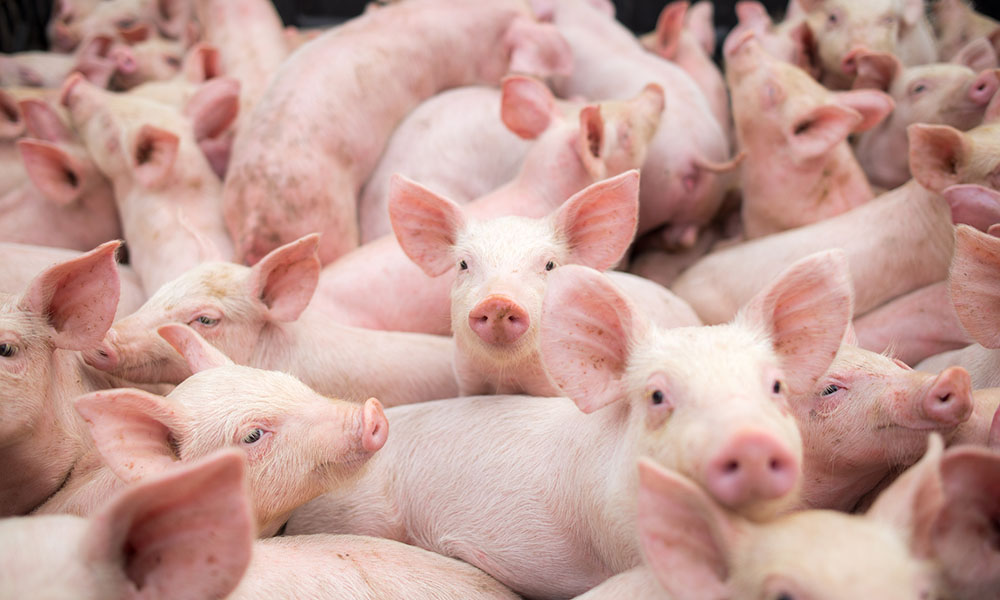Brazilian swine exports continue at a good pace

Porto Alegre, August 12, 2021 – There is great apprehension in the Brazilian market about future exports to China, considering the numbers of its swine chain and the possible rounds of contract renegotiations, as occurred in June, which brought some discomfort, serving as an example of what could happen should there be a strong slowdown in shipments to the Asian country. A point that deserves attention is that around 20% of Brazilian production are destined for foreign countries and almost 68% of this exported volume is bound for China and Hong Kong. There is currently no other player in the world market capable of occupying this space of China, thus, the Brazilian market must closely monitor Chinese data, such as the evolution of prices, herd data, and news on African swine fever. Brazil must adjust its production while that of China advances to avoid sharp price swings and a major crisis.
Brazilian pork exports had an excellent performance again in July, reaching 100.3 thousand tons (fresh and processed), up 1.3% from the same month of 2020. The average price per ton in July was USD 2,422, down 3.35% from USD 2,506 in June. China imported 50.76 thousand tons, down from 58.49 thousand tons in June, however, that can be considered a normal performance, but the numbers for the coming few months deserve attention. From January through July, Brazilian exports totaled 651.27 thousand tons, up 14.2% from 570.14 thousand tons in the same period last year. Considering only China, Brazil has already exported 347.2 thousand tons this year, up 23.1% from 282.1 thousand tons from January through July 2020.
What to expect from Brazilian shipments in the coming few months? China will keep buying good volumes, but low pork prices in its territory could result in a more moderate import stimulus during the second half of the year. The average price of pork in China ended July at 25.93 yuan per kilogram, up 5.4% from the end of June, but down 49.8% from the end of 2020. So far, authorities have announced the purchase of 53,000 tons of frozen pork for state reserves, helping to control prices.
New contract renegotiations tend to happen, which must not be exclusive to Brazilian beef, but globally. This is an important point, considering that the margins of meat-packers can become narrower, hindering new highs in livestock in the domestic market. It is also worth noting that the feedstuff cost will remain high in the short and medium term, which will keep the scenario quite challenging for Brazilian farmers.
The decline in business flow between the United States and China may help Brazilian shipments. In July, the United States shipped 20.8 thousand tons to China, the weakest result since May 2019. Besides, Brazilian pork is more attractive than the US product due to the exchange rate and the scale of prices in the US market, which has coped with a restricted supply.
As for internal demand, there is a more favorable environment for the coming few months, considering that vaccination has advanced, enabling the easing of restrictive measures. Important sectors such as restaurants, snack bars, and malls must show a greater flow of business. The high price of beef in a scenario of deteriorating income due to inflation may favor pork cuts, an attractive substitute. Chicken is more affordable today and the favorite protein by average Brazilian consumer, however, the spread between pork carcass and frozen chicken is quite narrow, a favorable factor for pork cuts over the next few months.
Read also
Wheat in Southern Brazil Impacted by Dry Weather and Frosts
Oilseed Industry. Leaders and Strategies in the Times of a Great Change
Black Sea & Danube Region: Oilseed and Vegoil Markets Within Ongoing Transfor...
Serbia. The drought will cause extremely high losses for farmers this year
2023/24 Safrinha Corn in Brazil 91% Harvested
Write to us
Our manager will contact you soon



